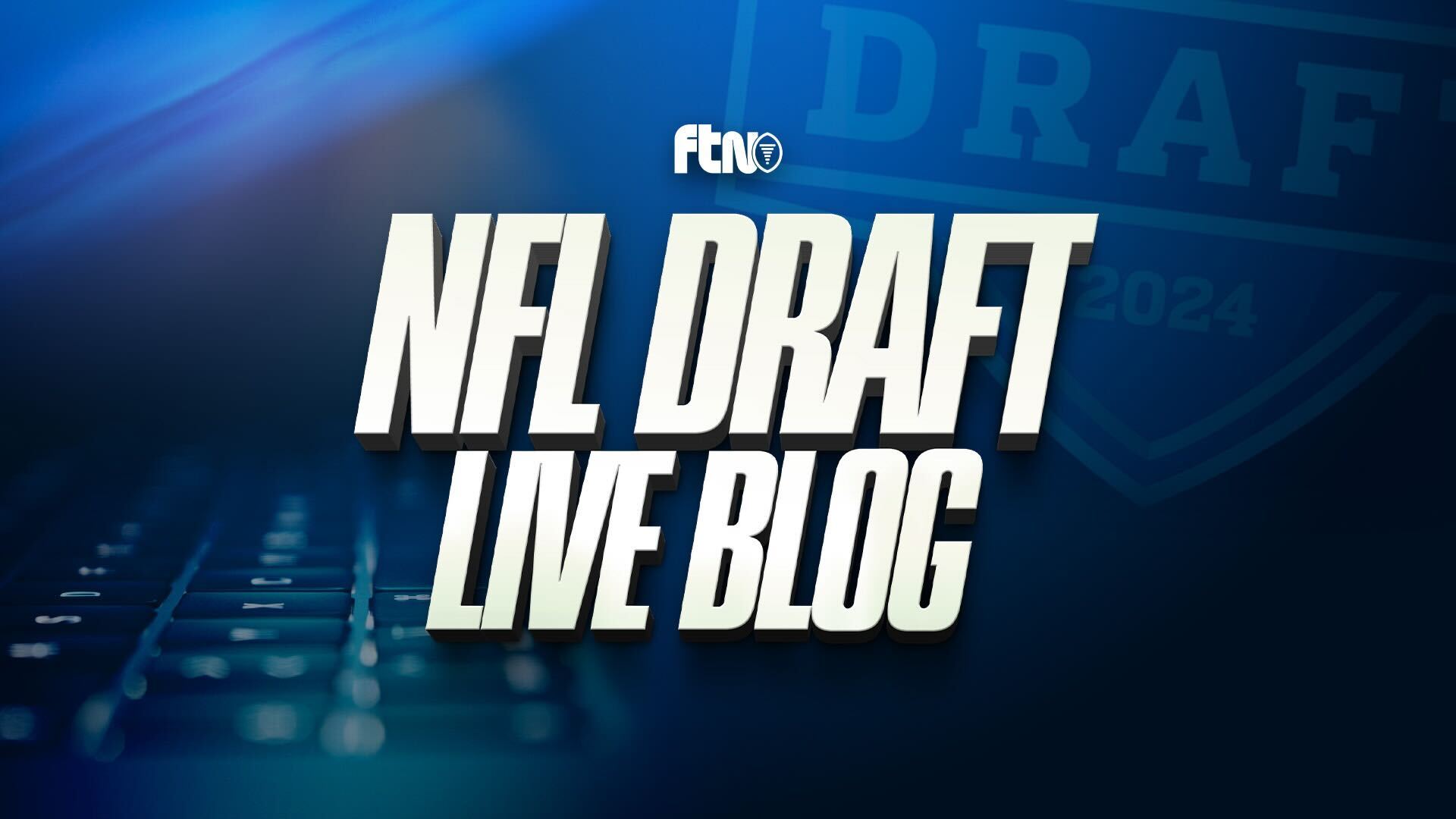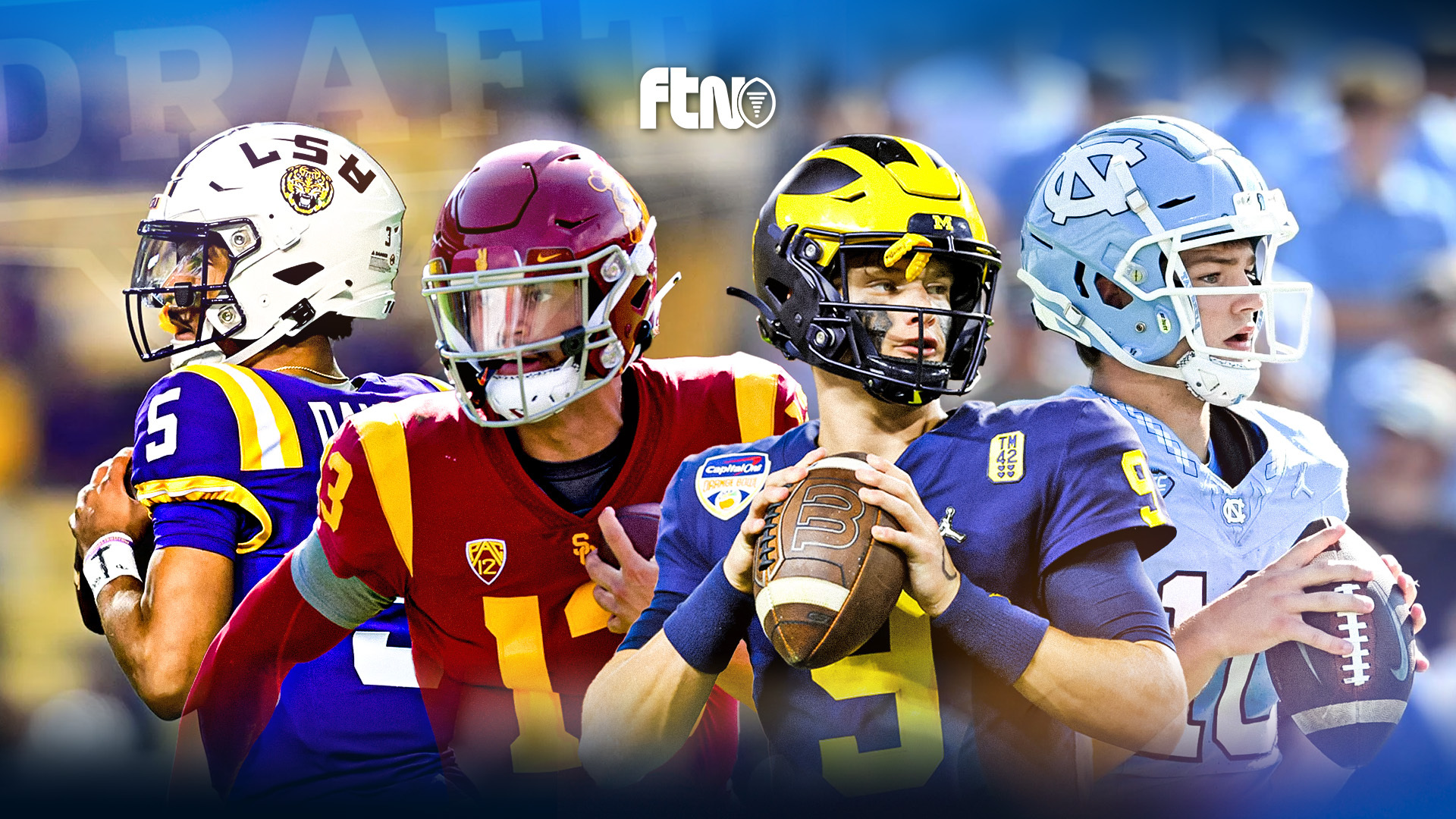
Last year, we broke new ground with the introduction of Fantasy Wins Added. Then we doubled up on new stats to play with by introducing Fantasy Grades.
Think PFF grades — but for fantasy football.
This piece explains FTN’s Fantasy Grades, gives a review of last year’s takeaways, and lets you know how to use this data to your advantage.
Why do we need Fantasy Football Grades?
Fantasy football analysis has come a long, long way over the last 15 years, but despite the epic advancement of data-driven study, the basic stats everyone still references lack the context needed to make them actionable.
“Austin Ekeler finished as a top-five fantasy RB each of the past three weeks” is useful information, sure, but it lacks significant context. What if the RBs who finished 6-12 all scored only 1-2 fewer fantasy points? What if he was 10 points behind the RBs who finished 1-4? There has never been a real way to give this needed context without getting too long-winded, so we’ve been stuck with half-baked takes.
Until now. Enter fantasy football grades: A single number that tells you everything you need to know about how the player performed relative to other players.
FTN’s Fantasy Football Grades
I have created a gradebook for every player from every game. Every player receives grades in the following categories:
- Final Grade (Points Scored)
- Opportunity Grade
- Efficiency Grade
All grades range from 40 (lowest) to 100 (highest).
I go position-by-position each week and place each player into one of five groups. Each group corresponds to a grade range:
- Low (40-60, F)
- Below Average (60-70, D)
- Average (70-80, C)
- Above Average (80-90, B)
- High (90-100, A)
The thresholds to be placed in these buckets are dynamically determined each week for each position. (The thresholds are dynamic because they are based on standard deviation cut-offs for each position in a given week. This prevents any arbitrary cutoffs for what constitutes a “good” or “bad” game. It’s all relative — every single week.)
Definitions from the FTN Fantasy Football Gradebook
Here is what every play will be graded on during the season.
Note that all grades — except for the “Flex Grade” — help you compare players to other players at the same position. A QB with a 90 grade and an RB with a 90 grade were not necessarily equally valuable that week. (That’s what Fantasy Wins Added is for.)
Final Grade
This score is based on how many actual fantasy points each player scored relative to every other player at their position in a given week.
Opportunity Grade
This score is based on how many expected fantasy points each player had relative to every other player at their position in a given week. XFP are calculated based on each player’s opportunity on every single play and factors in field position, down, depth of target, and more.
The correlation between my XFP calculations and actual fantasy points scored across all positions is 0.978. It’s accurate for all four positions:
| Position | XFP to FP Correlation |
| Quarterback | 0.985 |
| Running Back | 0.980 |
| Wide Receiver | 0.977 |
| Tight End | 0.981 |
Efficiency Grade
This score is based on how many actual fantasy points each player scored compared to their expected fantasy points. Only players with a minimum of 3 XFP in a given week receive a grade in this category to rule out extremes. (This minimum threshold may be adjusted in the future.)
Flex Grade
Running backs, wide receivers and tight ends will also receive a “Flex Grade” so you can compare these positions to one another for Flex spots. This score is based on how many actual fantasy points each player scored relative to every other player at these three positions in a given week.
And that’s pretty much it. The Fantasy Gradebook is excellent because we can add new metrics to grade players on in the future, but points scored, opportunity, and efficiency felt like a solid place to start.
2022 Fantasy Football Grades
For the 2023 season, we will release grades for every player every week. There will also be season-long grades, which will just be the player’s weekly grade averages.
Below are charts showing you the 2022 leaders in Fantasy Grades. Here were the top 20 players in season-long grades last year, ordered by Final Grade. (Season-long grades are currently derived from an average of each week, but we may tweak this in the future. We’ll update this post if the methodology changes.):
| Player | Pos | Team | Final Grade | Opportunity Grade | Efficiency Grade | Flex Grade |
| Travis Kelce | TE | KC | 90.8 | 90.8 | 77.8 | 86.4 |
| Jalen Hurts | QB | PHI | 90.3 | 82.4 | 85.5 | |
| Josh Allen | QB | BUF | 89.8 | 86.0 | 80.7 | |
| Austin Ekeler | RB | LAC | 89.6 | 90.8 | 77.1 | 89.2 |
| Patrick Mahomes | QB | KC | 88.8 | 84.5 | 84.0 | |
| Justin Jefferson | WR | MIN | 88.3 | 88.8 | 75.2 | 87.6 |
| Christian McCaffrey | RB | SF | 87.7 | 88.6 | 76.1 | 87.4 |
| Cooper Kupp | WR | LA | 87.4 | 86.6 | 80.1 | 87.6 |
| Ja’Marr Chase | WR | CIN | 87.2 | 88.5 | 77.0 | 87.4 |
| Tyreek Hill | WR | MIA | 86.2 | 83.5 | 80.3 | 86.5 |
| Josh Jacobs | RB | LV | 85.7 | 86.0 | 76.6 | 86.1 |
| Joe Burrow | QB | CIN | 85.5 | 83.3 | 83.3 | |
| Stefon Diggs | WR | BUF | 85.3 | 86.2 | 75.1 | 86.0 |
| Derrick Henry | RB | TEN | 85.2 | 85.4 | 79.9 | 86.3 |
| Davante Adams | WR | LV | 85.1 | 86.7 | 75.7 | 85.1 |
| Saquon Barkley | RB | NYG | 84.4 | 86.4 | 74.8 | 84.8 |
| A.J. Brown | WR | PHI | 84.3 | 82.5 | 79.5 | 85.3 |
| CeeDee Lamb | WR | DAL | 84.2 | 83.6 | 80.5 | 84.8 |
| Tee Higgins | WR | CIN | 83.8 | 80.5 | 81.4 | 84.2 |
| George Kittle | TE | SF | 83.7 | 82.7 | 80.0 | 79.7 |
The A-Listers
In 2022, a total of 19 players had at least four individual weeks in which they earned an “A” grade. This was down from 22 the previous year, indicating that there were fewer game-breaking studs in the fantasy world.
| Player | Pos. | # of “A” Weeks |
| Jalen Hurts | QB | 9 |
| Patrick Mahomes | QB | 9 |
| Justin Jefferson | WR | 9 |
| Travis Kelce | TE | 8 |
| Josh Allen | QB | 8 |
| Austin Ekeler | RB | 8 |
| Davante Adams | WR | 7 |
| Christian McCaffrey | RB | 6 |
| Cooper Kupp | WR | 5 |
| Tyreek Hill | WR | 5 |
| Josh Jacobs | RB | 5 |
| Joe Burrow | QB | 5 |
| Derrick Henry | RB | 5 |
| Mark Andrews | TE | 5 |
| Ja’Marr Chase | WR | 4 |
| Stefon Diggs | WR | 4 |
| A.J. Brown | WR | 4 |
| Tee Higgins | WR | 4 |
| George Kittle | TE | 4 |
Note that it is extremely difficult to earn an “A” grade. Only a few players per week achieve the status. You don’t earn an “A” simply by finishing top three (or some other arbitrary cutoff) at the position in a given week or scoring a certain number of points.
| Position | Avg. # of “A” Players Each Week | Avg. # of “B” Players Each Week | Avg. # of “C” Players Each Week | Avg. # of “D” Players Each Week | Avg. # of “F” Players Each Week |
| QB | 4 | 6 | 15 | 6 | 4 |
| RB | 4 | 17 | 31 | 16 | 13 |
| WR | 5 | 26 | 47 | 24 | 15 |
| TE | 3 | 12 | 25 | 14 | 7 |
This creates a nice bell-curve of sorts for every position — but with extra scarcity at the “A” group. The majority of performers land in the “C” group for average performers.

The thresholds to earn certain grades (A, B, C, D, F) are dynamic based on the standard deviation of point distribution, but they are designed in a way to keep “A” as a truly elite tier — and even the “B” tier is intended to be difficult to achieve, too.
Using Fantasy Football Grades to identify the best (and worst) defenses
Using the “A” grades as a threshold is usually a good gauge for how much week-winning ability a certain player might have. After all, the “A” grades are reserved only for the players that moved the needle in a given week.
So we can now use this information and apply it to other areas, like defense vs. position.
The data shows some things we’d expect — like the high-powered Chiefs and Lions offenses giving up a lot of big weeks to opposing QBs and WRs, too. Shootouts, as they say.
But the Bengals – another high-powered offense – gave no zero “A” games to QBs. Those games weren’t as solid of a “game environment” as you might expect. Ditto for the Eagles (only one “A” given up to each of QB, RB, WR last year despite the fact the Eagles scored 29.1 points per game (second in the league).
| “A”-Grade Fantasy Football Performances Allowed: 2022 Season | ||||
| Team | QB | RB | WR | TE |
| Arizona Cardinals | 5 | 2 | 0 | 4 |
| Kansas City Chiefs | 5 | 1 | 6 | 1 |
| Detroit Lions | 5 | 1 | 5 | 3 |
| Indianapolis Colts | 4 | 3 | 3 | 1 |
| Tennessee Titans | 4 | 1 | 5 | 4 |
| Miami Dolphins | 4 | 4 | 1 | 4 |
| Jacksonville Jaguars | 4 | 3 | 3 | 2 |
| Pittsburgh Pirates | 3 | 1 | 5 | 3 |
| Dallas Cowboys | 3 | 1 | 4 | 0 |
| Minnesota Vikings | 3 | 3 | 1 | 0 |
| Seattle Seahawks | 3 | 3 | 0 | 2 |
| Carolina Panthers | 2 | 1 | 1 | 2 |
| San Francisco 49ers | 2 | 0 | 5 | 0 |
| Los Angeles Rams | 2 | 4 | 5 | 2 |
| Las Vegas Raiders | 2 | 6 | 1 | 1 |
| New England Patriots | 2 | 0 | 2 | 2 |
| New York Giants | 2 | 2 | 1 | 3 |
| Los Angeles Chargers | 2 | 3 | 3 | 1 |
| Chicago Bears | 1 | 3 | 4 | 0 |
| Washington Commanders | 1 | 1 | 4 | 1 |
| Tampa Bay Buccaneers | 1 | 2 | 3 | 3 |
| Houston Texans | 1 | 7 | 1 | 2 |
| Denver Broncos | 1 | 4 | 2 | 1 |
| Atlanta Falcons | 1 | 3 | 5 | 2 |
| New Orleans Saints | 1 | 0 | 3 | 1 |
| Baltimore Ravens | 1 | 0 | 3 | 1 |
| Green Bay Packers | 1 | 2 | 4 | 2 |
| Philadelphia Eagles | 1 | 1 | 1 | 0 |
| Cleveland Browns | 1 | 2 | 4 | 0 |
| Buffalo Bills | 1 | 1 | 4 | 1 |
| New York Jets | 0 | 1 | 0 | 1 |
| Cincinnati Bengals | 0 | 1 | 3 | 1 |
Stay tuned throughout the 2023 season for weekly and season-long report card releases!


































